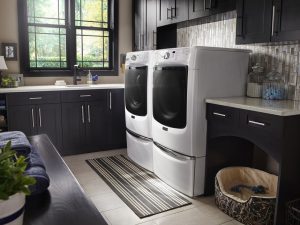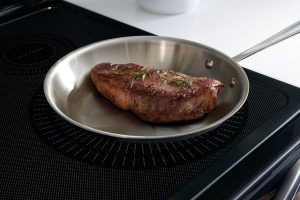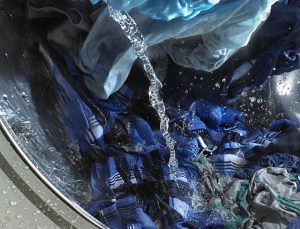Spring Cleaning: Cleaning that dirty oven
Tips for cleaning your oven. There are 3 types of oven interiors. self-cleaning, continuous cleaning, and conventional cleaning.
Self-cleaning ovens are also described as pyrolytic ovens. They have a cleaning cycle whereby the oven locks and the interior temperature reaches very high heat and turns any baked on materials sticking to the oven interior into ash. The ash can be easily swept out of the oven after the cleaning cycle. Before cleaning remove the oven racks and any loose material and follow the oven instructions. Typically, this means the oven will lock for 2, 3, or 4 hours for light, medium, or heavy soil. At the end of the cycle and after cool down the oven will unlock so that you may brush out the ash. Then wipe the oven with a soft damp cloth.
Continuous cleaning ovens, often referred to as catalytic ovens, have an oven coating that will absorb and spread minor spills. Large spills need to be removed and wiped off to prevent staining the oven cavity. Never use any abrasive material or commercial oven cleaner in a continuous cleaning oven.
Conventional or standard cleaning ovens have neither a self-cleaning cycle nor a continuous cleaning coating. There are 2 ways to clean a standard cleaning oven. The first method we recognize as “elbow grease”. An easier way is to use a commercial oven cleaning product. These are typically caustic chemicals so wear oven gloves and make sure that there is adequate ventilation so that your eyes are protected, and you are not overcome with fumes.
We’ll cover the cleaning of really dirty oven racks in a future posting. Next Spring Cleaning post will be the dishwasher.
- Luxury Refrigerator Guide 2025: Built-In vs. Freestanding and What to Know Before You Buy
- How Smart Appliances Are Changing Luxury Kitchen Design in 2025
- The Ultimate Outdoor Grill Guide for 2025: Built-In vs. Freestanding
- Smart Bathroom Faucets & Fixtures in 2025: Blending Technology with Luxury Design
- Built-In Coffee Machines: Are They Worth It for Your Kitchen in 2025?
- How to Choose the Right Dishwasher for Your Home: Noise, Capacity, and Features Explained
- Top 5 Kitchen Appliance Colors and Finishes for 2025 (And How to Match Your Style)
- Why a Countertop Ice Maker is a Must-Have for Summer Kitchen Upgrades in Southern California
- How to Remove Scratches from Stainless Steel Luxury Appliances
- When Is the Best Time to Buy Appliances? Your 2025 Buying Guide







